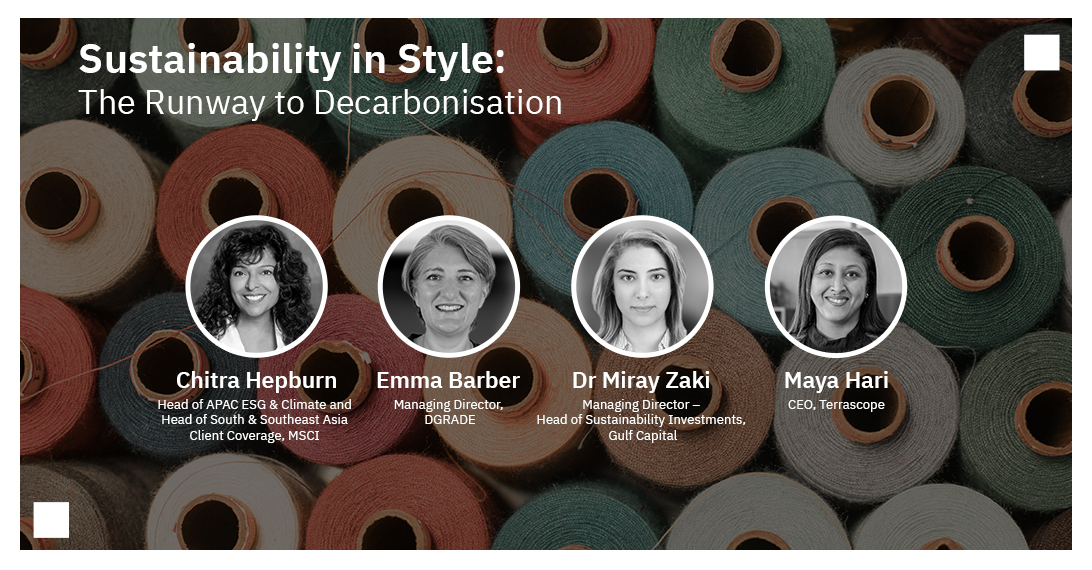Summary
- The fashion industry is a major source of pollution, responsible for 3-10% of global greenhouse gas emissions, 20% of fresh water pollution, and significant microplastic output, necessitating a reduction in emissions by 2030.
- Consumer awareness and demand for sustainability are driving brands to shift towards more environmentally-friendly practices, such as moving away from products with high emissions transparency and prioritising transparency.
- The industry is exploring circularity, with technology enabling the creation of a sustainable, responsible fashion ecosystem while addressing emissions and resource consumption.
Introduction
The fashion industry, a significant player in global commerce, is also a substantial contributor to environmental pollution, with its intricate supply chains generating considerable carbon emissions. It is responsible for about 3-10% of global greenhouse gas emissions, approximately 20% of global wastewater, and 9% of the microplastics that end up in the ocean. Research also shows that the fashion industry is responsible for about 2.1 billion metric tons of greenhouse gas emissions, which need to be reduced by half by 2030 in order to achieve the climate goals outlined in the Paris Agreement.
A recent report by the United Nations Framework Convention on Climate Change (UNFCC) and the CDP said that some progress has been made – such as complying with basic emissions reporting requirements, disclosing more climate-related information and collaborating – but the sector still has a long way to go. While companies are easily able to measure Scope 1 and 2 emissions, Scope 3 emissions measurement and disclosure is still a challenge, despite being the majority of the fashion industry’s emissions.

Understanding Decarbonisation in Fashion
In a panel discussion at the 28th Conference of the Parties of the UNFCCC (COP28) in Dubai, moderated by Chitra Hepburn, Head of APAC ESG and Climate and Head of South and Southeast Asia Client Coverage, MSCI, Maya Hari, CEO, Terrascope; Dr Miray Zaki, Managing Director, Gulf Capital; and Emma Barber, Managing Director of DGRADE, discussed the challenges and opportunities of decarbonising the fashion industry and supply chains, alongside key trends that reflect a collective commitment to a greener and more environmentally-conscious future in fashion:
1. Conscious Consumerism and Demand for Transparency: A significant trend that the panellists discussed was the heightened consciousness and awareness from consumers driving action in the sector. Using the leather industry as an example, Dr Miray explained that the modern customer is now more aware of the sustainability issues that plague the fashion world and is slowly shifting towards more sustainable options.
Anything that was not made with 100% real leather was once considered inferior but attitudes are now changing as the problems in the leather industry are coming to light with workers being exposed to poisonous chemicals. Consequently, global brands are now moving away from using real animal products as compared to 5 years ago. “Sustainability is becoming more pertinent to the consumer, especially to the Gen Zs who are championing thoughts across not just fashion but all industries,” Dr Miray said.
2. Emissions Measurement and Management: Maya noted that companies are adhering to growing consumer demands by measuring their carbon footprint in order to have green labelling, and avoiding greenwashing.
“When you step back, this journey has been as much a data journey for these companies as it is a decarbonisation journey. Companies need to know and bring together a lot of internal data, and then layer on top supplier data which is often very hard to gather, especially when you have a very fragmented manufacturing supply chain, or you have a lot of contract manufacturing in different parts of the world. But it's a data journey. And what companies now realise is if you don't have perfect data to start with, let's not even expect to have perfect data. Don't wait for perfect data to start that journey. Start and perfect it as you go.”
3. Circular Economy and Textile Recycling: Oil-based polyester and water-intensive cotton production contribute significantly to the fashion industry's carbon footprint. Emma from DGRADE shared that while recycling textiles presents significant challenges due to blends of materials and technical difficulties, chemical recycling shows promise.
Innovations aim to move beyond mechanical recycling, which often downgrades textiles, toward more efficient chemical recycling that could facilitate a truly circular fashion economy. “Sustainability is coming to the fore and there are consumers out there putting pressure on companies who want to make their own choices and see how important it is to be green”.
Conclusion
These themes underscore the evolving landscape of sustainability in fashion, driven by consumer awareness, technology-driven strategies, and the ongoing pursuit of circular economy innovations. The panel's insights reflect an industry striving for environmental responsibility while navigating emission challenges and fostering innovative solutions. As businesses, consumers, and investors align with these themes, the industry can continue to progress towards a more environmentally friendly and socially responsible future.



